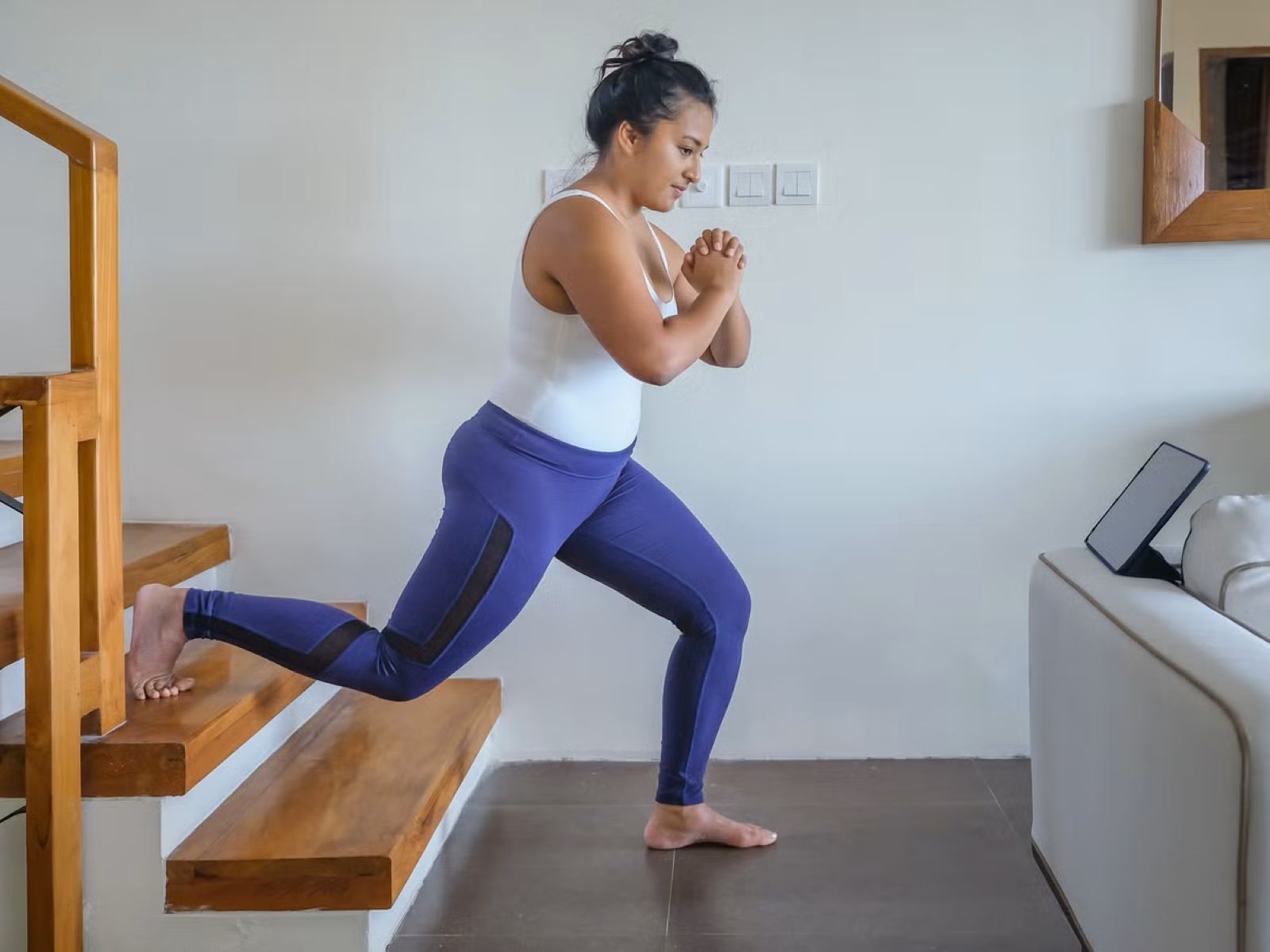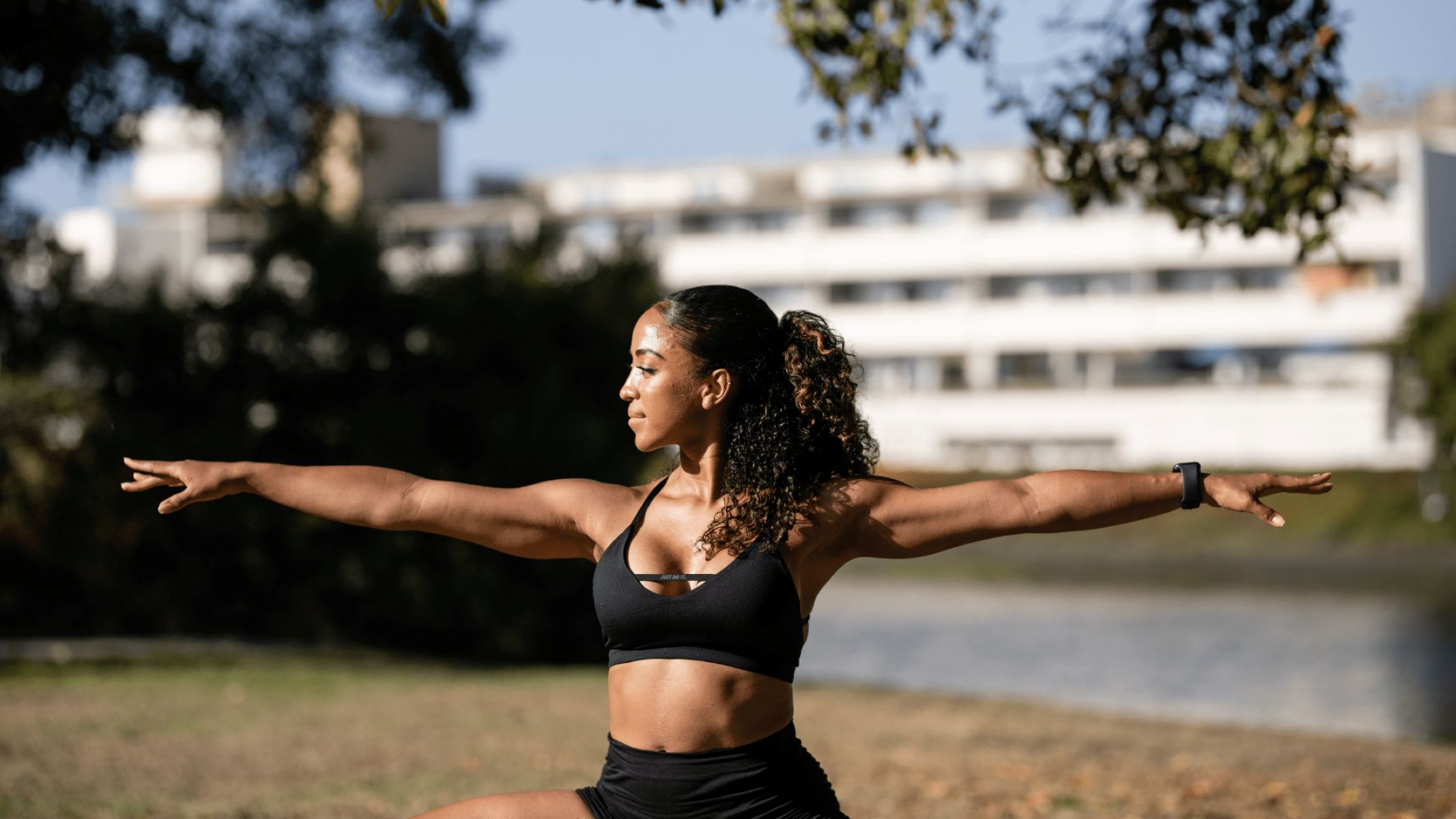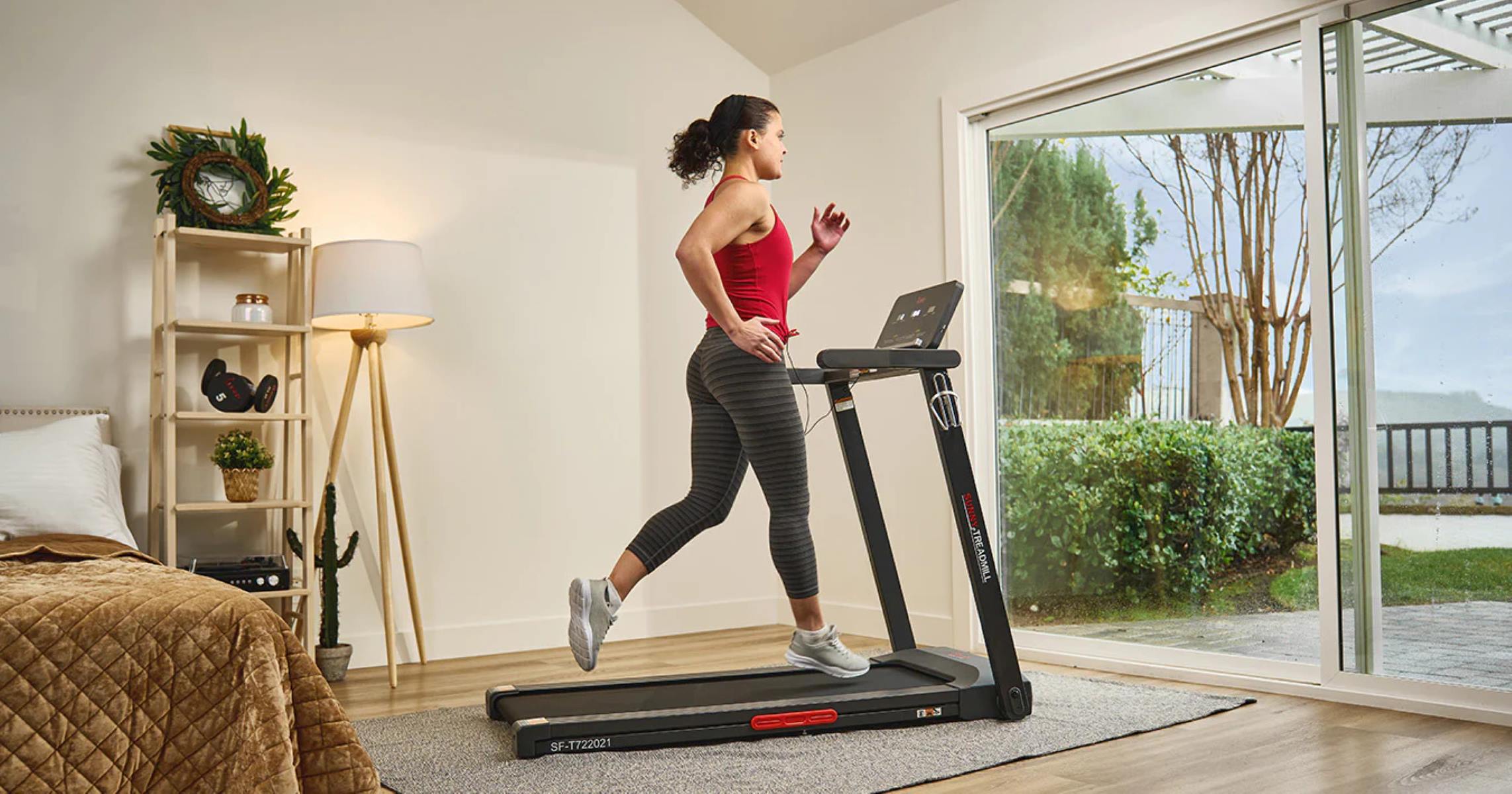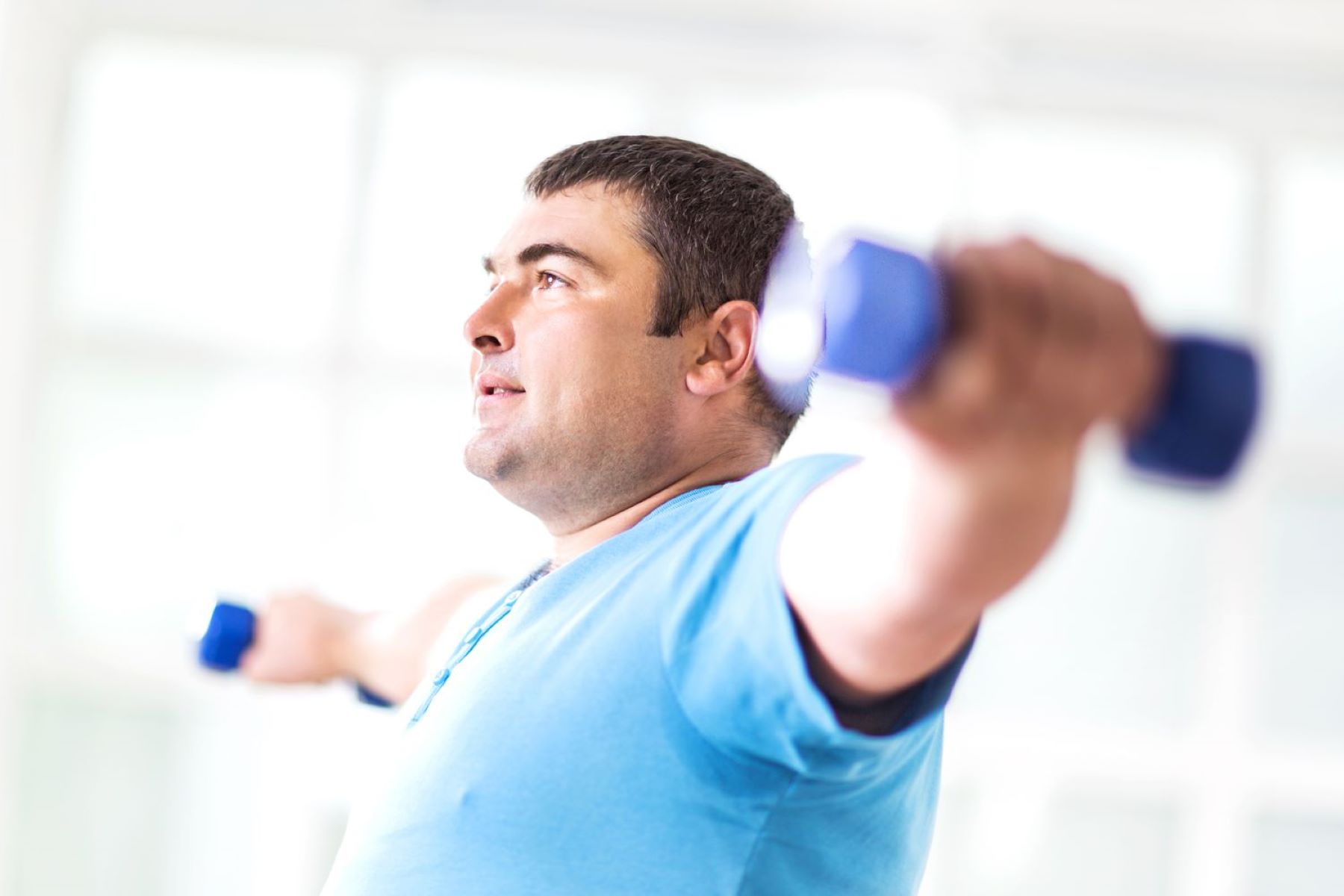Home>Misc>Featured>How Long Do You Have To Workout To See Results


Featured
How Long Do You Have To Workout To See Results
Modified: January 2, 2024
Get ready to see results with our featured workout! Discover how long you need to exercise to achieve your fitness goals. Start transforming your body today!
Introduction
When it comes to working out, we all have one ultimate question on our minds: how long does it take to see results? Whether you’re hitting the gym, doing home workouts, or engaging in any form of physical activity, the desire to see tangible progress is only natural. However, the answer to this question isn’t exactly straightforward. The time it takes to see results from your workouts can vary depending on several factors, including your fitness level, genetics, and the type of exercises you’re performing.
To set realistic expectations and chart your fitness journey effectively, it’s essential to understand the concept of workout results. Results can encompass a range of factors, such as increased muscle mass, improved cardiovascular health, enhanced endurance, and weight loss. The rate at which you experience these results will depend on various variables unique to your body and lifestyle.
Additionally, it’s important to note that seeing results doesn’t necessarily mean drastic transformations overnight. Instead, progress should be viewed as a gradual and ongoing process. Your body will undergo changes over time, and the key is to adopt a consistent workout routine combined with a balanced diet to optimize your results.
In this article, we will explore the factors that influence the time it takes to see results, delve into different types of workouts and their impact on results, discuss how to determine the optimal workout duration for desired outcomes, provide strategies to maximize workout efficiency, and address the importance of tracking progress and staying motivated throughout your fitness journey.
Understanding the Concept of Workout Results
Before delving into the specifics of how long it takes to see results from your workouts, it’s essential to grasp the concept of what these results encompass. When we talk about workout results, we are referring to the changes and improvements that occur in our body as a result of consistent exercise.
These results can vary depending on the goals you have set for yourself. For instance, if your aim is to build muscle, you may be looking for increased muscle mass, definition, and strength. If weight loss is your primary goal, you might be focused on shedding excess pounds and reducing body fat.
It’s important to remember that workout results are not solely limited to physical changes. Engaging in regular physical activity can have a positive impact on your overall well-being. You may experience improved mood, reduced stress levels, increased energy, and better sleep patterns.
Another crucial aspect of understanding workout results is recognizing that they are unique to each individual. Factors such as genetics, age, current fitness level, and body composition can influence how quickly you see progress. Additionally, your commitment to exercise, consistency in your routine, and adherence to a balanced diet will also play a significant role.
It’s crucial to set realistic expectations when it comes to workout results. Seeing substantial changes takes time and consistent effort. Rather than striving for immediate and drastic transformations, embrace the mindset of gradual progress. Celebrate the small victories along the way, whether it’s being able to lift heavier weights, run for a longer duration, or fitting into a smaller clothing size.
In the next section, we will explore the various factors that can impact the time it takes to see results from your workouts. Understanding these factors will help you set realistic goals and adjust your expectations accordingly, allowing you to stay motivated and committed to your fitness journey.
Factors Affecting the Time to See Results
When it comes to workout results, several factors can influence the time it takes to see progress. Understanding these factors will help you adjust your expectations and tailor your approach to achieve your desired outcomes more effectively.
1. Fitness Level: Your current fitness level plays a significant role in determining how quickly you’ll see results. If you’re just starting and have a relatively low fitness level, you may notice improvements more quickly in the initial stages of your fitness journey. On the other hand, if you’re already physically fit, it may take more time and effort to see noticeable changes.
2. Genetics: Genetics can impact how your body responds to exercise. Some individuals may have a genetic predisposition to build muscle more easily or lose weight at a faster rate. However, keep in mind that this does not mean those without such genetics are incapable of achieving their fitness goals. Regardless of your genetic makeup, consistent effort and smart training techniques can lead to significant results.
3. Diet and Nutrition: Exercise alone is not enough to see optimal results. Your diet and nutrition also play a crucial role. Fueling your body with the right nutrients, such as lean proteins, complex carbohydrates, and healthy fats, can support muscle growth, recovery, and overall performance. A balanced diet that aligns with your goals is essential for seeing results in a timely manner.
4. Workout Intensity and Frequency: The intensity and frequency of your workouts can impact the time it takes to see results. Higher intensity workouts, such as HIIT (High-Intensity Interval Training), can provide faster results compared to lower intensity exercises. Additionally, consistency is key. Regularly engaging in workouts and maintaining a consistent routine will yield better and more sustained results over time.
5. Rest and Recovery: Giving your body adequate rest and recovery is essential for progress. Rest days allow your muscles to repair and rebuild, preventing overtraining and reducing the risk of injuries. Ignoring rest and recovery can actually hinder your progress, so make sure to incorporate rest days into your workout schedule.
6. Lifestyle Factors: Lifestyle factors such as sleep, stress levels, and overall well-being can affect your ability to see results. Proper sleep allows your body to recover and recharge, while excessive stress can disrupt your hormonal balance, impacting your progress. Aim for a holistic approach to your fitness journey by prioritizing self-care and managing stress levels.
By considering these factors and making necessary adjustments, you can optimize your workout routine and set yourself up for success. In the next section, we will explore different types of workouts and their impact on achieving desired results.
Types of Workouts and Their Impact on Results
Various types of workouts can yield different results based on your fitness goals. Understanding the impact of these workouts can help you choose the right exercises to achieve the desired outcomes more efficiently.
1. Strength Training: Strength training exercises, such as weightlifting or resistance training, focus on building and toning muscles. These workouts can lead to increased muscle mass, improved strength, and enhanced body composition. Strength training is particularly effective for individuals looking to build lean muscle, boost metabolism, and achieve a toned physique.
2. Cardiovascular Exercise: Cardio workouts, such as running, swimming, or cycling, are excellent for improving cardiovascular health, burning calories, and reducing body fat. These workouts increase your heart rate, improve endurance, and can contribute to weight loss when combined with a balanced diet. Incorporating cardio exercises into your routine can help you achieve a leaner and more defined physique.
3. High-Intensity Interval Training (HIIT): HIIT workouts involve alternating between intense bursts of exercise with short periods of rest. These workouts are highly effective for increasing calorie burn, boosting metabolism, and improving cardiovascular fitness. HIIT can be a time-efficient option when looking to achieve both cardiovascular endurance and muscular strength.
4. Flexibility and Mobility Exercises: Flexibility and mobility exercises, such as yoga and Pilates, focus on improving flexibility, joint mobility, and posture. These workouts can enhance overall body function, muscle balance, and mind-body connection. Incorporating flexibility exercises into your routine can aid in injury prevention and improve overall movement and range of motion.
5. Sport-Specific Training: If you have a specific sport or physical activity you participate in, incorporating sport-specific training can help improve performance and endurance in that particular activity. Sport-specific workouts may involve drills, skill-building exercises, and conditioning techniques tailored to the demands of your chosen sport.
6. Functional Training: Functional training focuses on exercises that mimic real-life movements and improve overall strength, stability, and mobility. These workouts can enhance your ability to perform everyday activities and prevent injuries by targeting multiple muscle groups simultaneously.
The type of workout you choose should align with your specific goals and preferences. Incorporating a combination of different exercises can provide a well-rounded fitness routine and maximize your results. Keep in mind that consistency and proper form are key to seeing progress.
Now that we have explored the different types of workouts and their impacts, let’s move on to the next section, where we will discuss how to determine the optimal workout duration for desired results.
Determining the Optimal Workout Duration for Desired Results
When it comes to workout duration, there is no one-size-fits-all answer. The optimal workout duration will depend on several factors, including your fitness goals, fitness level, and the type of workout you are performing. It’s important to strike a balance between pushing yourself enough to stimulate progress and avoiding overexertion that can lead to burnout or injury.
1. Fitness Goals: The duration of your workout should align with your specific fitness goals. For example, if you are focusing on building strength and muscle, your workouts may require more time to allow for sufficient sets and repetitions. On the other hand, if your goal is to improve cardiovascular fitness, shorter but more intense workouts may be more suitable.
2. Intensity of Workout: High-intensity workouts, such as HIIT, may involve shorter durations but higher intensity intervals. These workouts can be effective even in shorter time frames, ranging from 15 to 30 minutes. Lower-intensity exercises, such as steady-state cardio, may require longer durations, typically in the range of 30 to 60 minutes.
3. Fitness Level: Your fitness level plays a crucial role in determining the optimal duration of your workouts. Beginners may need more time to build endurance and gradually increase workout duration. As you become more fit, you may find that you can complete effective workouts in a shorter amount of time due to increased efficiency and fitness capacity.
4. Time Availability: Consider your schedule and daily commitments when determining the optimal workout duration. While longer workouts may provide more time for additional exercises or extended rest periods, shorter, more focused workouts can be equally effective if properly structured and executed.
5. Recovery and Rest: Allowing for adequate rest and recovery days is crucial for optimizing overall progress. Regardless of the workout duration, ensure that you incorporate rest days into your routine to give your body time to repair and rebuild muscles.
It’s important to note that workout duration is not the sole determinant of results. The quality and consistency of your workouts, as well as proper nutrition and rest, are equally crucial. It’s better to focus on the effectiveness and intensity of your workouts rather than the length alone.
Experiment with different durations and listen to your body to determine what works best for you. Gradually increase workout duration and intensity over time as your fitness improves. Remember that striking a balance between challenging yourself and avoiding excessive strain is key to achieving desired results.
In the next section, we will discuss strategies to maximize workout efficiency and make the most of your exercise sessions.
Strategies to Maximize Workout Efficiency
Efficiency is crucial when it comes to maximizing the effectiveness of your workouts. By implementing these strategies, you can optimize your time spent exercising and achieve better results:
1. Plan and Prioritize: Plan your workouts in advance and prioritize the exercises that align with your specific goals. By having a clear plan, you can make the most of your time in the gym or during home workouts.
2. Warm-Up Properly: Warm-up exercises prepare your body for the workout, increase your heart rate, and improve blood flow to muscles. A proper warm-up can enhance your performance and reduce the risk of injuries.
3. Incorporate Compound Exercises: Compound exercises engage multiple muscle groups at once, making them more time-efficient and effective. Exercises like squats, deadlifts, and push-ups are great examples of compound movements that target several muscle groups simultaneously.
4. Supersets and Circuits: Alternating between exercises in a superset or performing a circuit of exercises can keep your heart rate elevated and maximize your calorie burn. This method allows you to work multiple muscle groups, enhance muscular endurance, and save time.
5. Use High-Intensity Interval Training (HIIT): Incorporate HIIT workouts into your routine to maximize calorie burn and cardiovascular fitness in a shorter amount of time. These workouts involve alternating between intense bursts of exercise and short recovery periods.
6. Focus on Proper Form: Performing exercises with proper form ensures that you are targeting the intended muscles and minimizing the risk of injury. Avoid rushing through exercises and prioritize quality over quantity.
7. Monitor Rest Periods: Be mindful of your rest periods between sets. While adequate rest is necessary for recovery, timing your rest periods can help maintain intensity and avoid unnecessary delays in your workouts.
8. Track and Progress: Keep a workout journal or use fitness tracking apps to monitor your progress. Tracking your workouts and recording your sets, reps, and weights can help you make gradual improvements and track your overall progress over time.
9. Stay Hydrated: Proper hydration is essential for optimal performance during workouts. Be sure to drink water before, during, and after your exercise sessions.
10. Rest and Recover: Allow for adequate rest and recovery days to prevent overtraining and promote muscle repair and growth. Rest days are just as important as workout days for achieving optimal results.
Remember, maximizing efficiency doesn’t mean rushing through your workouts. It’s about making the most of the time you have and focusing on quality rather than quantity. By implementing these strategies, you can enhance the productivity and effectiveness of your workouts, bringing you closer to your fitness goals.
In the next section, we will discuss the importance of tracking progress and staying motivated throughout your fitness journey.
Tracking Progress and Staying Motivated
Tracking your progress and staying motivated are essential aspects of any fitness journey. These practices help you stay accountable, monitor your achievements, and maintain the drive to reach your goals. Here are some strategies to track progress and stay motivated throughout your fitness journey:
1. Set Measurable Goals: Start by setting specific, measurable, and realistic goals. By having clear objectives, you can track your progress more effectively and celebrate each milestone you achieve.
2. Take Before and After Photos: Visual progress can be a powerful motivator. Take before and after photos to see the changes in your body composition over time. These photos can serve as a reminder of how far you’ve come and inspire you to keep pushing forward.
3. Keep a Workout Journal: Maintain a workout journal to track your exercises, sets, reps, and weights. This not only helps you stay organized but also allows you to see improvements in strength and endurance over time.
4. Use Fitness Tracking Apps: Utilize fitness tracking apps or wearable devices to monitor your workouts, track your steps, and record your heart rate. These tools can provide valuable insights into your progress and help you set new targets.
5. Regularly Assess Your Progress: Schedule regular assessments to evaluate your performance and measure your progress. Whether it’s tracking your body measurements, monitoring your running times, or performing strength tests, these assessments help you gauge your improvements objectively.
6. Celebrate Small Victories: Acknowledge and celebrate your achievements along the way, no matter how small they may seem. Recognizing and rewarding yourself for your hard work can boost motivation and provide an extra incentive to keep going.
7. Find an Accountability Partner: Partner up with a friend or join a fitness community to find support and accountability. Having someone to share your journey with can keep you motivated and help you stay consistent with your workouts.
8. Mix Up Your Routine: Boredom can quickly demotivate you. Keep things interesting by varying your workouts, trying new exercises, or participating in different fitness classes. Challenge yourself with new routines to keep your enthusiasm levels high.
9. Reward Yourself: Set up a reward system to incentivize your progress. Treat yourself to something you enjoy when you reach certain milestones, such as buying new workout gear or booking a relaxing massage.
10. Remind Yourself of Your “Why”: Reflect on your reasons for embarking on this fitness journey. Whether it’s to improve your health, increase confidence, or set a positive example for others, reminding yourself of your “why” can reignite your motivation during challenging times.
By consistently tracking your progress and finding ways to stay motivated, you can overcome obstacles, maintain your focus, and achieve lasting results. Remember, your fitness journey is a marathon, not a sprint. Stay committed, be patient, and embrace the journey as you work towards a healthier and stronger version of yourself.
Conclusion
Embarking on a fitness journey and working towards your desired results requires a combination of patience, dedication, and smart strategies. Understanding the concept of workout results, the factors affecting the time it takes to see progress, and the impact of different types of workouts can help set realistic expectations and tailor your approach accordingly.
By determining the optimal workout duration for your goals, maximizing efficiency through proper planning and execution, and staying motivated through progress tracking and various strategies, you can pave the way for success.
Remember that there is no one-size-fits-all approach to achieving fitness goals. Each individual’s journey is unique, influenced by various factors such as genetics, fitness level, and lifestyle. What matters most is finding an approach that works for you and staying committed to consistent effort and healthy habits.
Throughout your fitness journey, celebrate every milestone and small victory along the way. Embrace the process, enjoy the positive changes you experience in your body and mind, and maintain a mindset focused on long-term progress rather than quick fixes.
Finally, always prioritize your overall well-being and listen to your body. Rest and recovery are crucial components of any successful fitness journey, ensuring that you can continue to enjoy the benefits of exercise while preventing burnout or injuries.
So, lace up your sneakers, set your fitness goals, and dive into your workout routine. With dedication, consistency, and a positive mindset, you are on your way to achieving the results you desire. Trust the process and enjoy the incredible journey towards a stronger, healthier, and more confident you!









